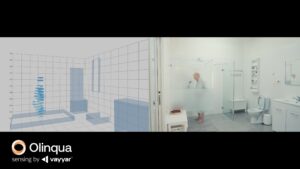Over recent decades, the rate at which healthcare and hospital technology has evolved, especially from an operational perspective, has accelerated, delivering much-needed improvements to everything from patient care, to facilities management and communication.
While, similar to most industries, the capacity for healthcare businesses to adapt to these demands to keep up with developments has at times been challenging, hospitals are now rapidly catching up, committing to mass implementations of electronic medical record systems, new diagnosis equipment and patient care platforms.
In particular, advances in health tech have impacted how traditional healthcare services are delivered, with emerging devices and advanced healthcare systems embedded into a network to link the complex healthcare landscape as an ecosystem.
Olinqua’s Ignite platform has played a crucial role in creating this ecosystem in leading hospitals, by integrating crucial operations and clinical systems, to enable them to work together efficiently and effectively.
The social benefits
Patient care
Technology helps simplify communications, enable linkages between information sources within hospitals, and improve patient outcomes.
Advanced medical devices, such as diagnostic tools and imaging equipment, can assist doctors in making more accurate diagnoses and developing more effective treatment plans.
New technologies, including telemedicine and remote monitoring, can enable healthcare professionals to monitor patients closely and quickly intervene when necessary. This can lead to faster recovery times, fewer complications, and better patient health outcomes.
In addition, digital tools can make healthcare more accessible for people living in rural or remote communities, helping to bridge the healthcare gap and improve health equity. New technologies can help promote health and well-being for people of all ages and backgrounds by improving access to healthcare and making it more affordable.
In 2019, 75% of Australians over 75 years had inadequate health literacy. With digital accessibility a key focal point, especially for those with visual challenges, this is slowly changing, as technology enables education and empowers people with accurate, reliable and useful information.
During the COVID-19 pandemic, this benefit was particularly beneficial as a means to restrict the virus’ transmission and ensure healthcare remained accessible for all. According to the 2021 NAB Australia Consumer Health Survey, the use of telehealth soared from barely one per cent of consultations to over 30 per cent.
Sitting beneath all of these improvements, advancements in software have significantly changed the way medical records are managed, supplies and assets are tracked, and images and files are shared, reducing human error, speeding up the pace at which patients are attended to and treated, and enabling more streamlined healthcare practices.
Overall, by providing better access to consultation and treatment, earlier and more accurate diagnosis, monitoring of patient status outside the walls of the hospital, and more streamlined operations, the burden on families with sick or ageing loved ones has been decreased and the gap between people from different socioeconomic backgrounds and locations is shifting.
Staff communication and automation
Electronic Health Records (EHRs) allow healthcare professionals to easily access and share patient information, improving coordination among healthcare teams. Communication and collaboration are further improved by secure messaging systems, such as that offered by Olinqua, as is response to critical alarms that can mean life or death in hospitals.
Additionally, digital tools can automate administrative tasks, such as scheduling appointments and billing, freeing up healthcare professionals to focus on providing care.
Finally, the ability to collect and analyse large amounts of data can greatly assist healthcare decisions as a whole and improve population health.
In hospitals where demand is at record highs, staff shortages are debilitating service, and already too-high rates of staff assault on the rise, technology is paving the path for better processes that streamline service and maximise efficiency, while increasing staff safety.
The economic benefits
Healthcare costs
Evolving hospital technology offers the potential to reduce healthcare costs. This is particularly important when considering that healthcare is one of the largest government expenditures, and as a result, reducing costs and increasing capacity is an important priority.
With reduced costs, hospitals can spend their budgets across patient care more broadly and help deliver an enhanced patient experience.
By improving patient outcomes and reducing the need for repeat visits and prolonged hospital stays, new technologies such as facility monitoring– something we offer at Olinqua – can help lower the overall cost of healthcare.
Economic growth
Implementing new medical devices and technologies can greatly assist in creating jobs in the healthcare industry and thus stimulate economic growth. From asset tracking to paging systems, skilled professionals must implement and provide support where needed.
In addition, the improved patient outcomes and reduced healthcare costs provided by these technologies can help businesses keep their employees healthy and productive, leading to a more efficient and profitable workforce.
Evolving technologies – how can Olinqua play a role?
At Olinqua, we’re working together for better health – uniting people, processes, devices and data to optimise hospital operations. Drawing on evolving technology, we offer a connected workforce and a connected environment.
Our integrated hospital software provides solutions for effective incident management, staff safety, secure and fast communications, real-time facility monitoring, and efficient asset tracking.
Using artificial intelligence and IoT sensors, we offer smarter digital workflows – combining disparate sources of information and effectively creating smarter hospitals and smarter outcomes for patients.
A note on security and privacy
It’s important to note that evolving hospital technology also comes with its own set of challenges. Ensuring the security and privacy of patient information is crucial, as well as addressing the digital divide, or lack of access to digital technology and internet access in certain communities, to ensure that everyone can benefit from these advancements.
More on Olinqua
If you want to discover more and how Olinqua can support your hospital by utilising evolving technology, get in touch with us today!



